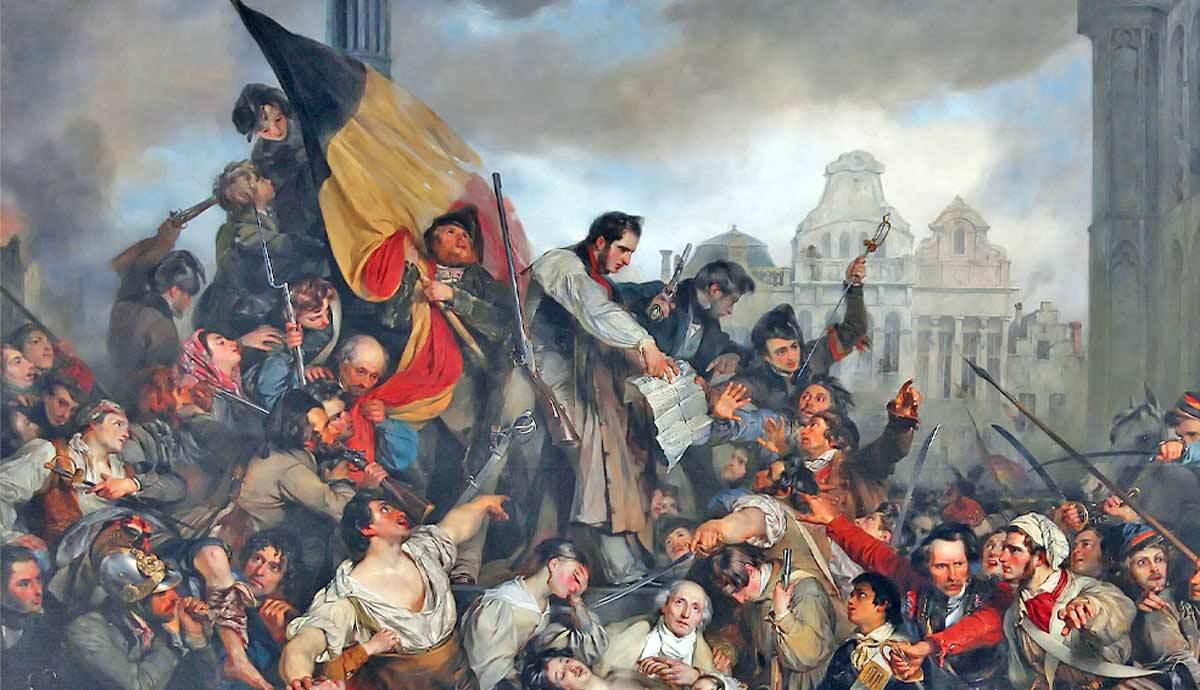
The Liège Revolution was a significant event in European history, often overshadowed by the French Revolution. This uprising, which began in 1789, was driven by the desire for freedom from oppressive rule. Citizens of Liège, inspired by Enlightenment ideas, sought to overthrow the Prince-Bishop and establish a more democratic government. Key figures like Jean-Nicolas Bassenge played crucial roles in mobilizing the masses. The revolution had a profound impact on the region, influencing political thought and sparking similar movements. Understanding the Liège Revolution provides valuable insights into the broader context of revolutionary fervor in late 18th-century Europe.
Key Takeaways:
- The Liège Revolution, inspired by the French Revolution, aimed to abolish oppressive rule, promote democracy, and reshape society, leaving a lasting impact on European politics and culture.
- Led by influential figures and fueled by Enlightenment ideals, the Liège Revolution sparked social equality, secularism, and artistic expression, laying the foundation for modern political institutions and inspiring future democratic movements.
The Beginning of the Liège Revolution
The Liège Revolution, a significant yet often overlooked event, reshaped the political landscape of the Prince-Bishopric of Liège. Let's dive into some fascinating facts about this historical upheaval.
- The Liège Revolution began on August 18, 1789, inspired by the French Revolution.
- The revolution was a direct response to the oppressive rule of Prince-Bishop César-Constantin-François de Hoensbroeck.
- The revolutionaries aimed to abolish the feudal system and establish a democratic government.
- The revolution was led by the bourgeoisie, who were influenced by Enlightenment ideas.
- The revolutionaries formed the "Société des Amis de la Liberté et de l'Égalité" to organize their efforts.
Key Events During the Revolution
Several pivotal moments defined the course of the Liège Revolution. These events highlight the determination and resilience of the revolutionaries.
- On August 18, 1789, the revolutionaries stormed the Prince-Bishop's palace, forcing him to flee.
- The revolutionaries established a provisional government, declaring Liège a free republic.
- In 1790, the Holy Roman Empire intervened, temporarily restoring the Prince-Bishop's power.
- The revolutionaries regrouped and, with French support, recaptured Liège in 1792.
- The Treaty of Campo Formio in 1797 officially ended the Prince-Bishopric, integrating Liège into the French Republic.
Influential Figures of the Revolution
The Liège Revolution saw the rise of several key figures who played crucial roles in its success. Their leadership and vision were instrumental in shaping the revolution.
- Jean-Nicolas Bassenge, a lawyer and politician, was a prominent leader of the revolution.
- Anne-Josèphe Théroigne de Méricourt, a feminist and revolutionary, supported the cause and rallied the people.
- Charles-Lambert d'Outrepont, a former magistrate, provided legal expertise to the revolutionary government.
- François-Charles-Joseph de Méan, the last Prince-Bishop, was a staunch opponent of the revolution.
- General Jean-Baptiste Cyrus de Valence, a French military leader, aided the revolutionaries in their fight against the Holy Roman Empire.
Impact on Society and Culture
The revolution had a profound impact on the society and culture of Liège, leaving a lasting legacy that can still be felt today.
- The abolition of feudal privileges led to greater social equality and mobility.
- The revolution promoted secularism, reducing the power of the Catholic Church in Liège.
- Educational reforms were introduced, emphasizing Enlightenment ideals and scientific inquiry.
- The revolution inspired a wave of artistic and literary expression, reflecting the new democratic values.
- The establishment of a democratic government laid the foundation for modern political institutions in Liège.
Legacy of the Liège Revolution
The Liège Revolution may have been short-lived, but its legacy endures. It set the stage for future democratic movements and influenced the broader European revolutionary landscape.
- The revolution demonstrated the power of Enlightenment ideas in challenging authoritarian rule.
- It served as a precursor to the Belgian Revolution of 1830, which led to the creation of an independent Belgium.
- The revolution highlighted the importance of popular sovereignty and the right to self-determination.
- The events of the revolution are commemorated annually in Liège, celebrating the city's fight for freedom and equality.
- The revolution's impact on European politics can be seen in the subsequent rise of democratic movements across the continent.
The Legacy of the Liège Revolution
The Liège Revolution left a lasting impact on European history. It sparked a wave of democratic movements across the continent. The revolution showed the power of ordinary people to challenge oppressive regimes. Despite its initial failure, it laid the groundwork for future uprisings and reforms.
The revolution also highlighted the importance of freedom and equality. It inspired other regions to fight for their rights and liberties. The bravery and determination of the revolutionaries remain a powerful reminder of the human spirit's resilience.
Today, the Liège Revolution is remembered as a pivotal moment in the struggle for democracy. Its legacy continues to influence modern political thought and movements. By understanding its history, we can appreciate the sacrifices made for the freedoms enjoyed today. The revolution's lessons remain relevant, reminding us of the ongoing fight for justice and equality.
Frequently Asked Questions
Was this page helpful?
Our commitment to delivering trustworthy and engaging content is at the heart of what we do. Each fact on our site is contributed by real users like you, bringing a wealth of diverse insights and information. To ensure the highest standards of accuracy and reliability, our dedicated editors meticulously review each submission. This process guarantees that the facts we share are not only fascinating but also credible. Trust in our commitment to quality and authenticity as you explore and learn with us.
